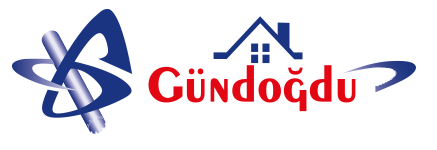Sewer Line
Sewerage Network System
It is a system consisting of pipes and channels established for the removal of waste water and liquids from cities and all regions we live in, industrial areas. The sewage system consists of pipelines and manholes. It is used to transport wastewater and rain water from buildings and industrial uses to wastewater treatment plants or other water sources.
What is a Manhole
The manhole is the reservoir where the waste water and other waste water coming around the building are collected. There is one main manhole in each building. The manhole, which can be produced in various sizes, is manufactured from a minimum of 60 * 60 and a maximum of 120 * 120 rounds of concrete astringent material. In the sections where vehicle and pedestrian passage are provided, manhole covers are covered with pig (pig) or high strength plastic composite. After they are closed, these covers are intervened and control and cleaning processes are carried out. A connection from the main manhole to the city sewer is required because the city sewer provides direct access to treatment or other water sources.
Sewer Usage Information
Non-standard liquid wastes with a pollution load above the limit values should not be allowed to be connected to the sewer. The water administrations should determine from which type of industrial facilities and businesses the liquid wastes will be taken by licensed tankers and from where in the sewer line they will be discharged. should record the age, material, diameter, slope of the sewer line and the nature and flow rate of the waste water. The sewer system should be processed on a GIS-based digital map, where there should be all kinds of data and information with the sewer line and wastewater feature. Again, more frequent monitoring, measurement and control processes should be carried out on the sewer lines, especially in regions where industry, laboratories, animal farms, car washes, restaurants, restaurants and fast food are concentrated, and these data should be processed into the system by making the necessary evaluations.
Possible problems should be analyzed in all aspects. Organized Industrial Zones (OIZ) wastewater should not harm the environment by continuously measuring, reporting and evaluating some polluting parameters such as pH, conductivity, turbidity, temperature, flow rate and oxygen in the discharged part of OIZ wastewater. damage the municipal sewer system. In areas where it is high, flow, turbidity, conductivity, pH, oxygen and temperature should be continuously measured in the sewer line. The sewer system should be monitored. Even in some sensitive areas, samples can be taken with automatic sampling devices and analyzed in the laboratory. These measurement results must be taken into account. Let’s not forget that some malicious people throw dangerous liquid wastes with high pollution load into the sewer at night and in rainy weather.
Sewer Construction
The construction of the sewer line system is the infrastructure system that enables the collection and disposal of dirty and waste water with special channels. In these channels, thick concrete-based pipes called (buzz) or p.v.c-based pipes with strong strength are used. Sewer pipes must be very strong. As a result of their puncturing, breaking and breaking, the negative effects on the environment are quite high. The flow rate of the sewer lines is made to flow at a rate of 2fps at ½ fullness. The flow rate keeps the pipes clean and prevents solids from accumulating. In places where there is no sewerage network, usually a septic tank is used, and at the filling level, it is drawn into the tank with the help of vehicles with vacuuming feature and discharged to the areas deemed appropriate by the municipalities.








